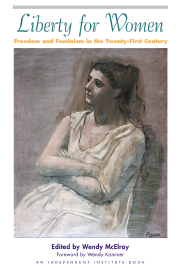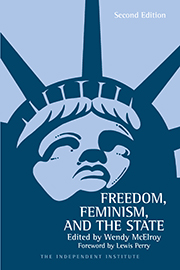The title of this intriguing book reveals its main theme: The Civil Rights Act (CRA) of 1964 has not only been a disaster for the nation as a whole, but it has also impacted negatively upon the very people it ostensibly protects—blacks and women. The CRA clearly states that race, religion and national origin are not to be used in employment practices. Instead, the Act was meant to encourage merit irrespective of a person’’s color or any other secondary characteristic. In order to secure passage of the CRA, advocates such as Senator Hubert Humphrey specifically assured critics, “[T]here is nothing in it that will give any power...to require hiring, firing, or promotion of employees in order to meet a racial ‘’quota’’ or to achieve a certain racial balance.” In Freedom Will Conquer..., lawyer J. Edward Pawlick provides a sophisticated legal history that sometimes crosses into brilliance. His analysis of the history of CRA is, by itself, well worth the price of the book. The political analysis causes me a problem now and then.
But, to preface any disagreement, it is important to state that I believe Pawlick’s political approach to affirmative action is fundamentally correct. Any attempt to impose morality—e.g. a code of social fairness—by law is doomed to fail and it will badly harm society in the process. The best the law can do is to provide full and equal protection of the person and property of each member of society. Then, it should back away and get out of people’s lives.
I also agree that by enforcing non-discrimination, the law has become a system of privilege by which men and non-minorities are being made to pay for sins they never committed. The law has become a remedial historian, re-writing the wrongs of 19th century America, such as slavery. Non-discrimination may or may not be a noble goal—I advocated it as one—but the relevant political question is, “even with laudable intentions, do you have the right to impose your moral judgments about fairness on peaceful human beings who disagree?” Pawlick says “no” in a loud voice. And I applaud him. For a white male in America to stand up and declare that affirmative action is an Empress without clothing is a gutsy act. Pawlick knows this himself. He states, “I would not write this book while I still owned a business. It would be equivalent to committing suicide.”
But, after the applause dies down, I am left with some disagreements. Space restraints permit me to mention only one. As a feminist who has written on the CRA, my focus naturally riveted on Section IV of Freedom Will Conquer..., entitled “It Hasn’t Helped Women.” Well, it hasn’t. No argument. Nor do I dispute Pawlick’s analysis of how the feminist movement has drifted politically since Betty Friedan’s The Feminine Mystique (1963)—the book that established the feminist movement as surely as Warren Farrell’s The Myth of Male Power (1993) inspired the men’s rights movement. Pawlick readily admits, “I read it [Friedan] in 1964, and I agreed with a lot of it.” Several pages later, he adds the comment, “...never realizing that we [white males] would soon be blamed for all of the ills of the world and that men in the United States in the later years of the 20th century would be blamed for all the problems that women had ever suffered or were now suffering throughout the entire history of the entire world.” Feminists who dismiss the men’’s rights movement as a whining males’ club would be well advised to consider Pawlick’s shift from sympathy to a sense of betrayal.
What happened? Friedan had voiced the unspoken complaints of women in the ’50s and she placed responsibility upon them to change their circumstances. She demanded a common sense equality with men: genderless laws and, maybe, men who vacuumed a floor every once in a while. An amazing number of men, including Farrell, became staunch supporters. Subsequent feminist theorists added their own elements, including rage at men and a class analysis that placed the two genders at war with each other. One element was also subtracted: women were no longer responsible for the problems within their own lives. Men were. All men. After they recovered from the shock of being identified as part of ‘’the rape culture’’ (aka American society), former male allies became vocal critics.
This was the beginning of a lamentable crusade to seek restitution from men as a class through the power of legislation, especially Title VI of the CRA. In doing so, women perpetuated the same political system against which their predecessors had fought so valiantly—a system that embedded gender into law and gave preference to one sex at the expense of the other.
At this juncture, the disagreement I must express with Pawlick’s analysis is two-fold. First, I do not consider the agenda of the new feminist theorists, as stated in the book, to be all bad. Among the positions he condemns are: “Women will work outside of the home”; and, “free and easy sex will be the norm.” I, too, am critical of the position that “a self-respecting woman will work outside of the home.” If a woman wishes to be a housewife and the man wants to support her, then it is their business. Nevertheless, on a personal level, I believe all women would benefit from being able to support themselves without depending upon a man, or any other human being.
As for “free and easy sex being the norm,” I have not encountered this sentiment within feminism on a wide-spread basis. Indeed, modern feminism is virulently anti-pornography and anti-prostitution. These stands would make the accusation of New Puritanism seem more appropriate than a charge of licentiousness. Even tracts advocating lesbian sex do not generally have a “free and easy” aspect to the depiction of sex: an anti-male one, yes, but not free and easy. Rather, the main theme of feminist literature on this issue is that women should have full control of their own sexuality, including access to birth control and/or abortion. In the presence of such control, most feminists I know have made the same choice as me: to enter a heterosexual, monogamous relationship. In my case, a marriage. In short, I simply do not agree that sexual choice leads to moral decay.
Also, I believe Pawlick is arguing—to some extent—against a feminist stereotype that does not accurately reflect reality. He is reacting to the most extreme voices within the movement without listening sufficiently the more moderate women who form the mainstream. Certainly, much of current feminist policy has been formed by extremists, whose voices are shrill and sometimes filled with an almost blind rage. But they have succeeded on issues, such as affirmative action, only because throngs of far less strident women see some justice in their positions. These more moderate feminists are not man-haters: they are wives and mothers and sisters. For them, affirmative action has the patina of justice because it promises equality of opportunity.
This goal fits nicely with the traditional American values of a classless society, equality before the law, and the ability to rise through hard work. Indeed, Pawlick agrees with the goal when he declares, “America must once again strive toward becoming a color-blind society, where a person’’s color or sex is unimportant.” But affirmative action is an ideal gone tragically astray, and I believe the blame can be cleanly ascribed. A moral position, a demand for fairness, is being imposed through law. In the process of using force to control peaceful behavior, the two social institutions that have most benefited women—the free market and individual rights—have been severely weakened. Thus, Pawlick is correct. The CRA has damaged women as well as devastating men. On an optimistic note, I think many women have come to realize that the legal system is a debacle, which presents a great opportunity to argue for the free market alternative.
I have slighted two significant aspects of Freedom Will Conquer.... First, the book’s analysis of affirmative action as it applies to blacks and other minorities. I honestly don’t have much to say about the analysis other than that the arguments are well constructed and well written. Pawlick draws upon the insights of the eminent black authors Thomas Sowell (Preferential Policies, 1991) and Walter Williams (The State Against Blacks, 1982.) The theme concerning blacks is, perhaps, best captured by a quote offered from the black theorist, Shelby Steele:
“If my benefits come to me primarily as a black, and not as an American, then the effect over time is to undermine common society—the common culture and democracy of America—America is my enemy. This kind of thinking causes me not to move into the American mainstream. Which correspondingly causes me to fall farther and farther behind.”
To rephrase this sentiment in feminist terms, “If benefits come to me because I am a woman rather than because I am human being who deserves them, I will fall farther and farther into dependency on government. When has that ever helped the individual, male or female?”
The second slighted aspect of Freedom Will Conquer... is its presentation of the history underpinning the CRA. The Act was passed in the wake of President Kennedy’s assassination and was a type of memorial to the dead leader, who supported the measure. His successor President Johnson pushed it through as part the agenda for his Great Society, a political blueprint that has shaped the world in which we live. For the historical overview alone, this book goes onto a shelf in my study so it will readily available when I want to quote it in future articles.









